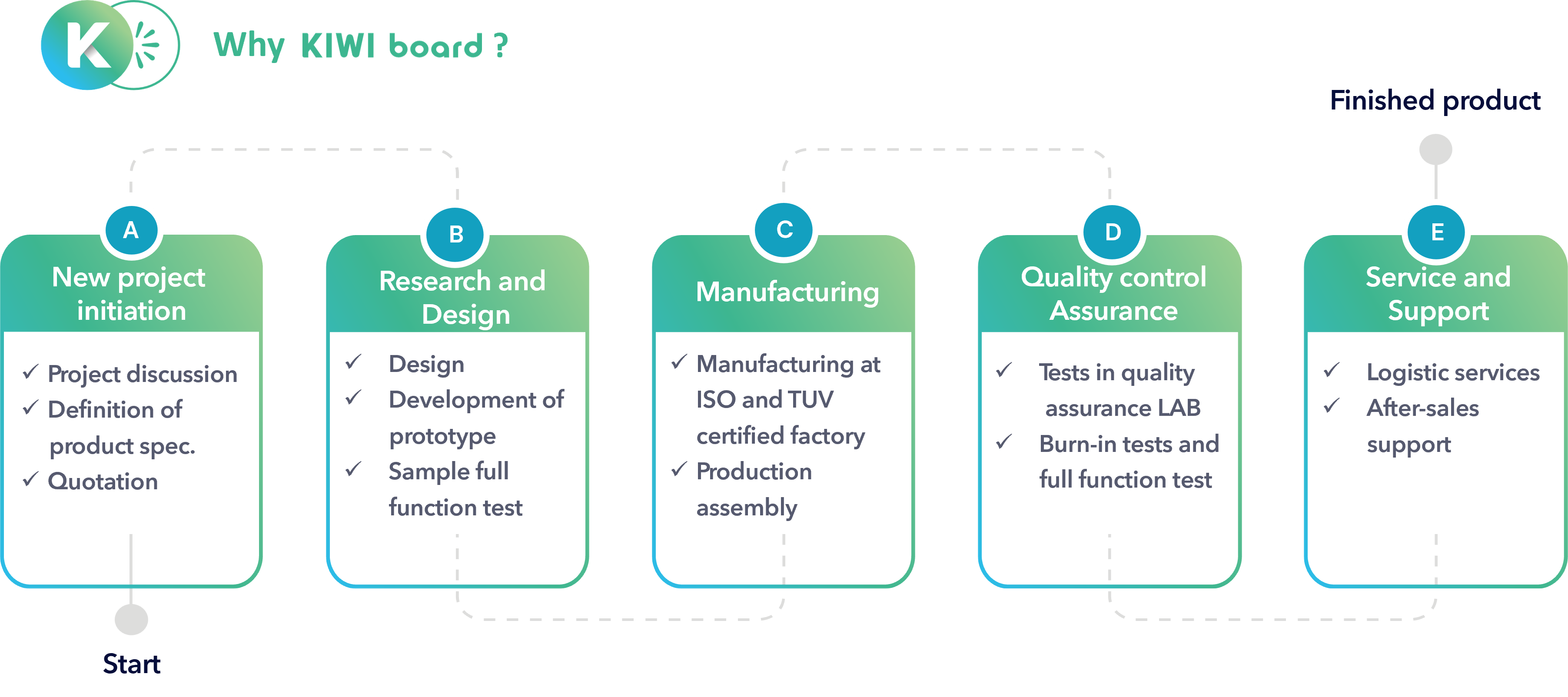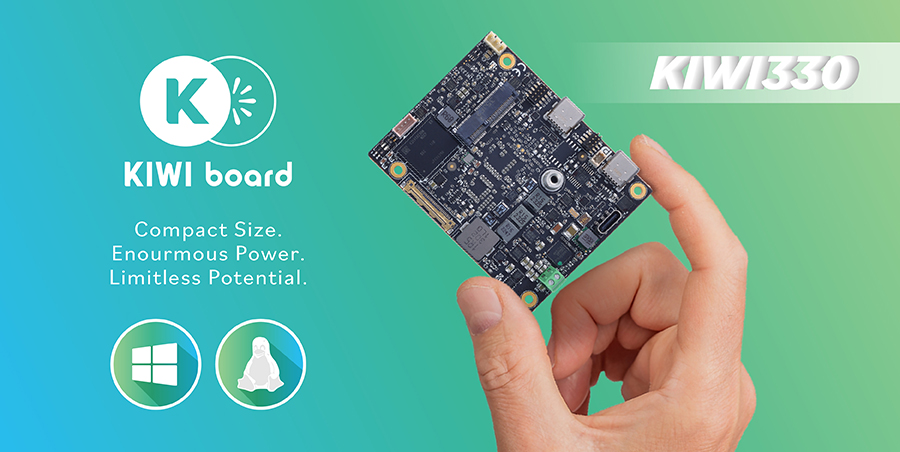
Smart Visual Interfaces for Embedded Systems
In modern embedded systems, effective data visualization is essential for real-time diagnostics, intuitive user interfaces, and reliable industrial monitoring. Among the most compact and effective visual output devices are LED matrices—particularly the 8x8 type, which is widely used due to its modularity, readability, and low power consumption. When combined with the MAX7219 LED driver, these matrices become powerful tools for creating flexible visual indicators and scrolling displays. The KIWI330, a compact x86-based embedded system powered by Intel® Alder Lake-N processors, is an ideal host platform for integrating such displays. Thanks to its MIO modules that offer multiple interfaces and dedicated middleware, they enable seamless communication with external modules, empowering developers to implement clear, real-time visual feedback with minimal overhead.
What Is an LED Matrix?
An LED matrix powered by the MAX7219 consists of 64 LEDs arranged in an 8x8 grid, capable of displaying characters, symbols, and simple graphics. The MAX7219 simplifies control by handling multiplexing internally and communicating via SPI, allowing developers to cascade multiple matrices with minimal wiring. With adjustable brightness, scan-limit settings, and efficient power use, this compact solution is ideal for industrial indicators, scrolling displays, and other embedded applications across sectors like manufacturing, transportation, and education.

KIWI330 SPI Integration with LED Matrices
The MIO333 module for KIWI330 is equipped with SPI capability via GPIO, and it pairs exceptionally well with the MAX7219 for driving LED matrices. Using the provided Middleware, developers can send SPI instructions directly to the MAX7219 without the need for external hardware or complex libraries. This allows for controlling one or more LED matrices by issuing simple register-value pairs over SPI.
In a standard configuration, the MOSI pin of the KIWI330 is connected to the DIN pin of the MAX7219, SCK is connected to CLK, and the CS is connected to chip select. Power and ground are shared between the two devices. This setup supports multiple MAX7219 chips in cascade, enabling more sophisticated visuals such as scrolling text or synchronized multi-panel animations.


Application Scenarios
Real-world applications for KIWI330 with LED matrices are numerous. In manufacturing environments, they can be used to display real-time production counts, error codes, or machine status. In smart buildings, they can indicate room occupancy, air quality data, or emergency alerts. For transportation or retail, scrolling text can be used to present messages, promotional information, or departure schedules. Due to their compact design and low power consumption, LED matrix displays are particularly well-suited for space-constrained applications.
Sample Code Download
To help you get started, a fully functional sample code that demonstrates how to connect and control the MAX7219 LED matrix via SPI using the KIWI330 is available in this link.
Download Sample Code – KIWI330 + MAX7219 (SPI)
About KIWI board
KIWI board is a complete solution provider, supporting all aspects of your project, from hardware to software to system integration, to keep your application running securely, reliably, and at peak performance. KIWI board builds its products for high reliability, performance, security, scalability, and versatility. So, customers can expect a long lifespan, quickly adapt to evolving system requirements, and adopt future technologies as they emerge.
Next steps
Ready to talk about your projects with a KIWI board expert? Contact us
Want to hear more from KIWI board? For our newsletter, Sign up
Or request a quotation










